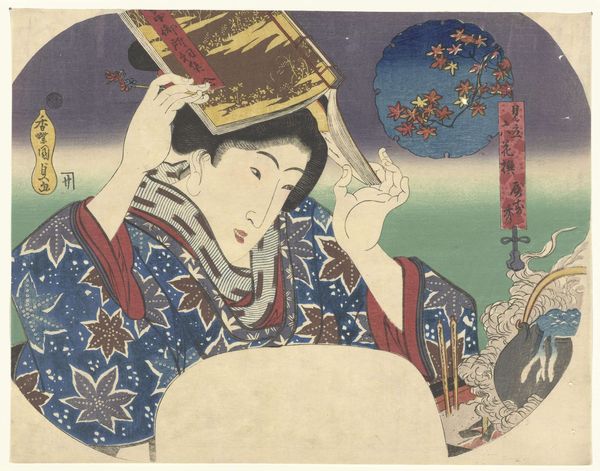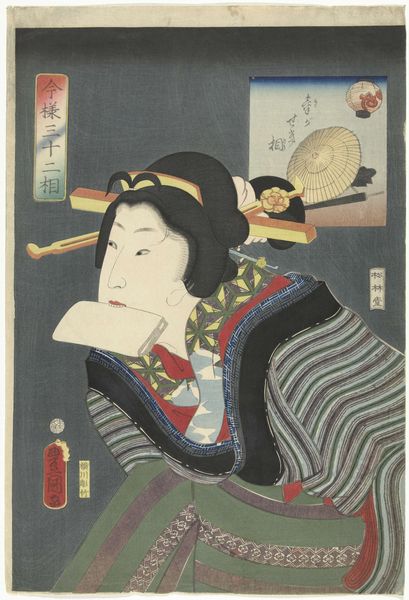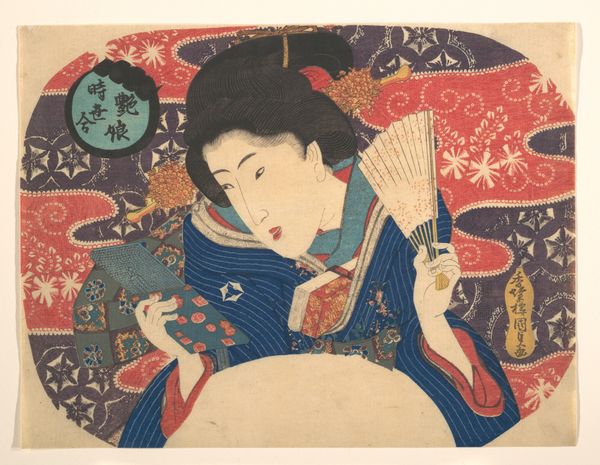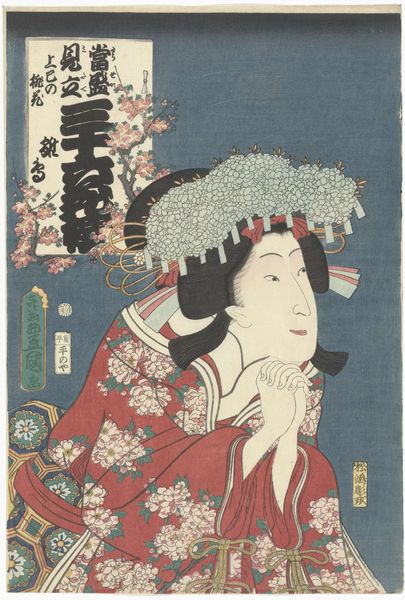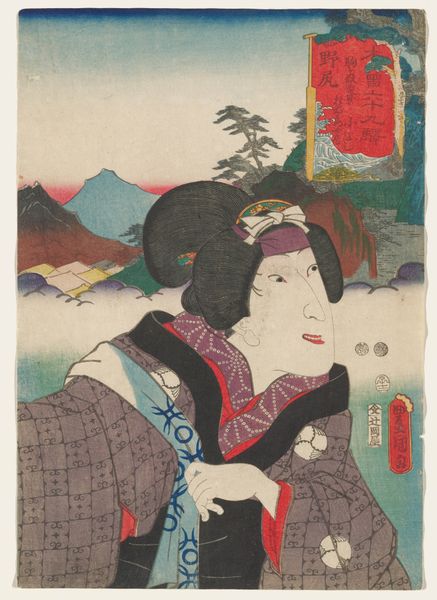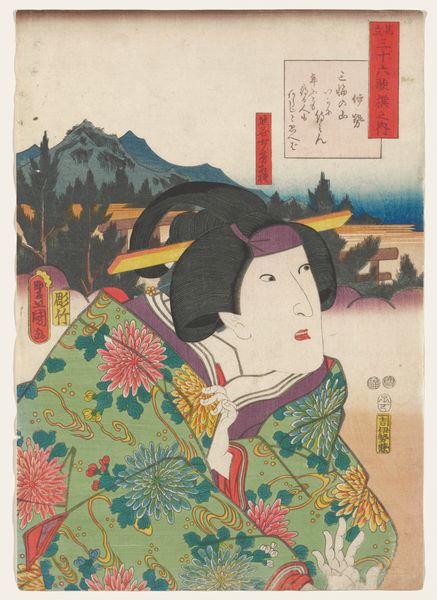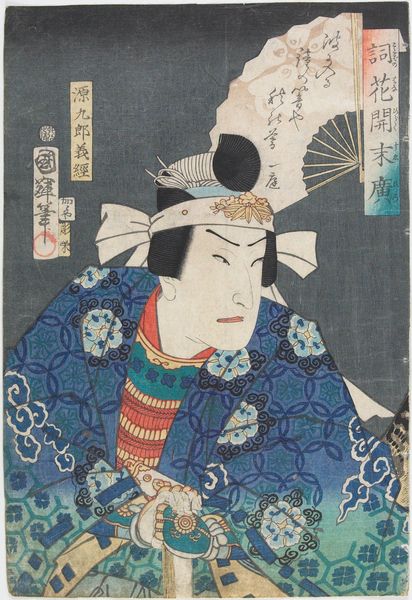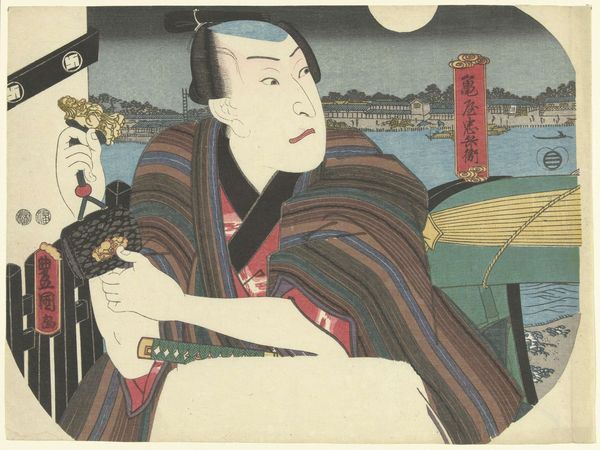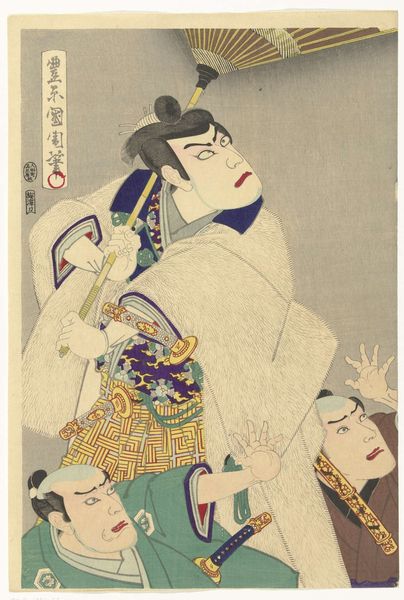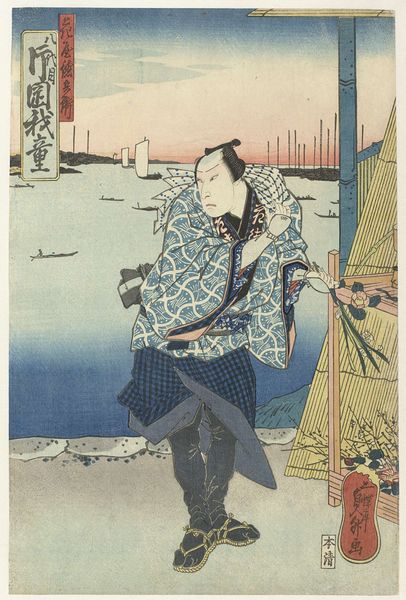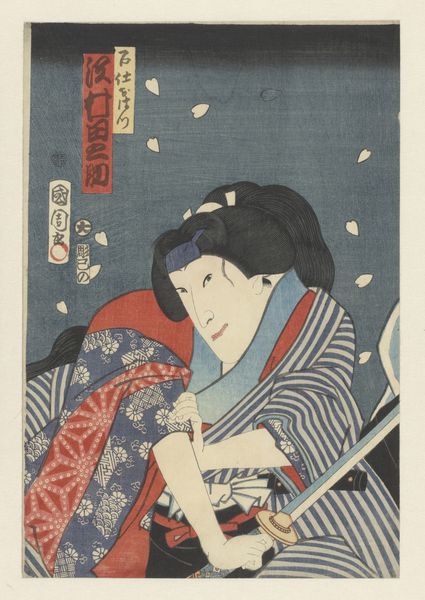
print, woodblock-print
#
portrait
# print
#
asian-art
#
ukiyo-e
#
figuration
#
woodblock-print
Dimensions: height 219 mm, width 290 mm
Copyright: Rijks Museum: Open Domain
Curator: "Vrouw met waterpotten," or "Woman with Water Pots," created around 1850 by Utagawa Kunisada. It's a woodblock print, an exquisite example of ukiyo-e artistry, housed here at the Rijksmuseum. My initial feeling? Intimacy, somehow... It's softly vibrant despite its age. Editor: There's something quite intriguing about this portrayal. The way the artist presents this woman, it’s so deliberately posed yet retains a sense of her labor, her daily reality. The water pots next to the figure anchor her to that labor, of course. But also to the water they hold. Think of the essential, often gendered labor of fetching water, crucial for survival. And the symbolic properties that come with the waters in this scene - water to wash with, drink, and cleanse… how does it relate to representations of women in Japan at this time? Curator: Indeed, the water pots do function symbolically, anchoring her to that daily life, but also adding to a richer emotional depth. Water is purity, but also depth and mystery. Think about Shinto purification rituals. What does the pattern on the water bucket itself suggest to us? It feels significant. Waves and currents have psychological weight; think of turbulence and stillness as states of mind. Editor: But considering the context of the Edo period and the burgeoning merchant class that Utagawa catered to, shouldn’t we examine how the artist depicts the woman herself? Is she empowered, constrained, idealized? The woodblock prints could certainly uphold strict standards but also introduce an alternative portrayal for some groups of women. Is she perhaps pushing back on idealized roles prescribed by societal norms? Is the labor she undertakes elevated or is it undermined? It matters to also think about which gender and economic strata produced and viewed these images at this time, to reflect on the historical circumstances of this artwork and what kind of messaging about class and gender was at play here. Curator: Absolutely. It’s a dynamic tension. Utagawa captures an ideal but within the reach of a person performing this work; there’s dignity alongside domesticity. The medium too lends itself to the tension we are describing. The stylization and color palette elevate a familiar scene. Woodblock printing made art accessible. The layers of meaning intertwine like the colors on the print. We are not simply admiring a domestic figure - rather a representation of female virtue rendered in the form of ordinary people. Editor: Yes, perhaps we both come away understanding better the complex messaging that surrounds this image of a woman laboring in this cultural moment. I see the push and pull more clearly now. Curator: Me too. It reveals a connection, perhaps, with something quite ancient. The archetypal figure of the water carrier connects the woman and the society to deeper shared symbolisms of virtue, survival and life.
Comments
No comments
Be the first to comment and join the conversation on the ultimate creative platform.
